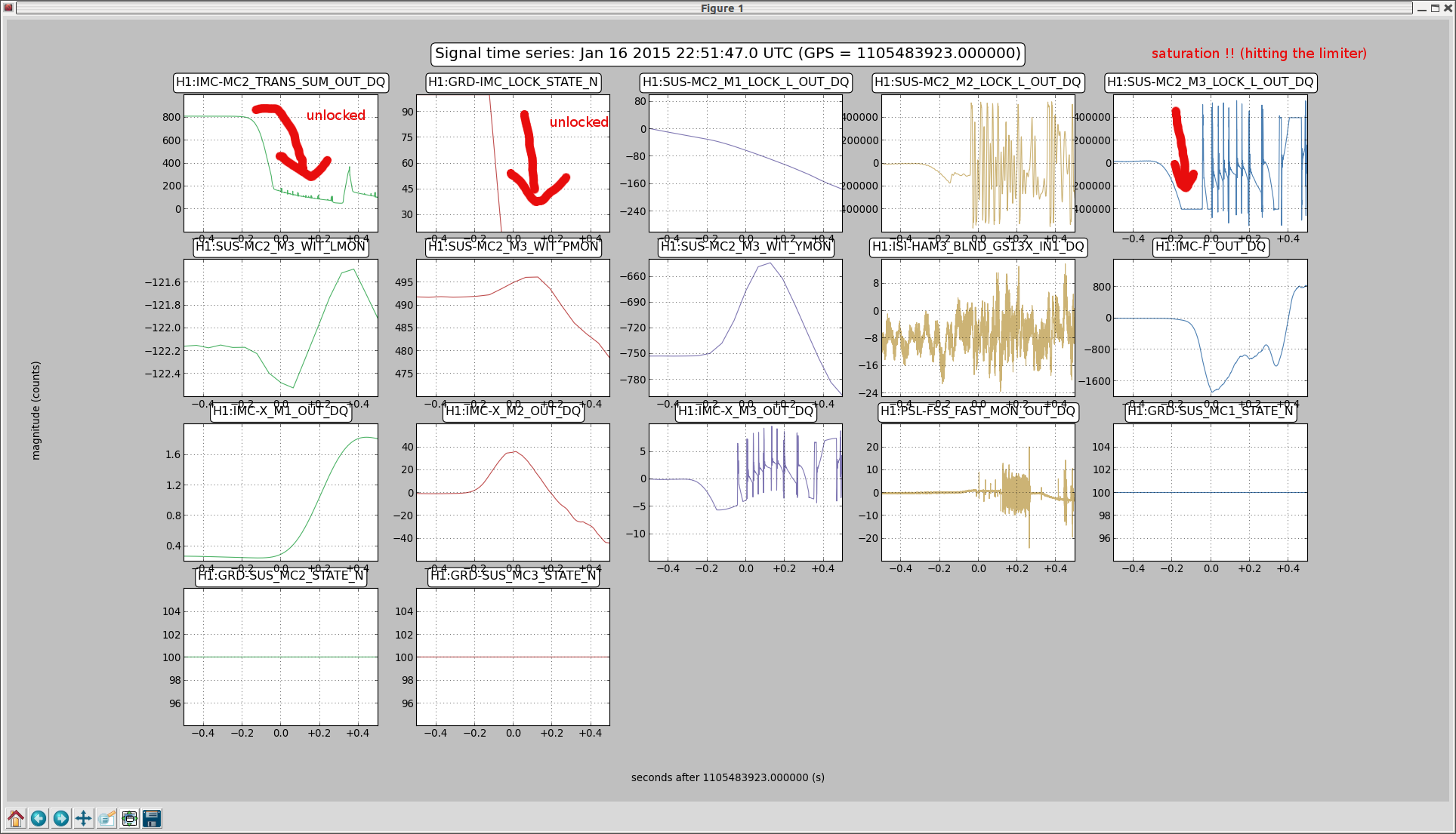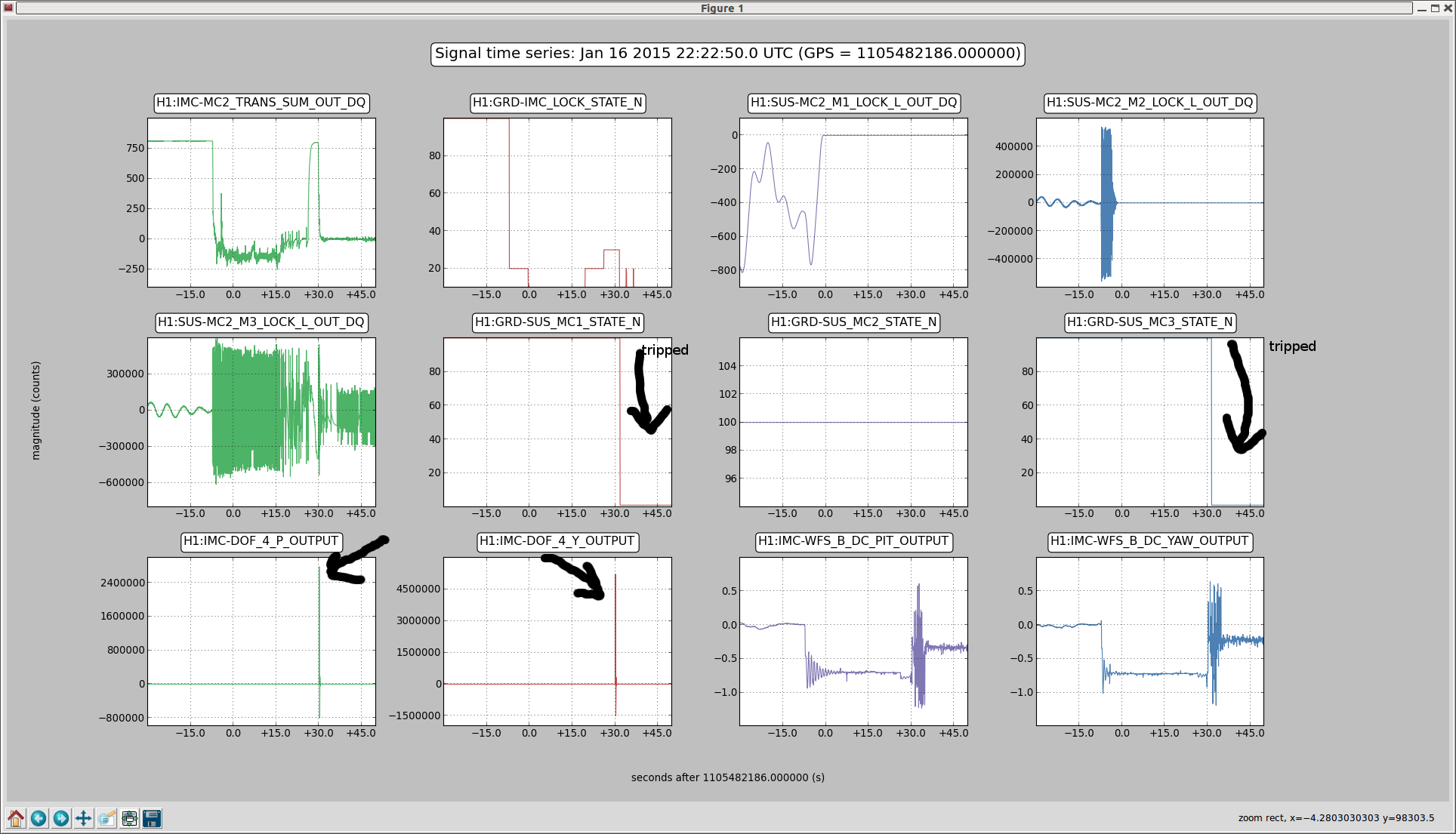Alexa, Kiwamu, Sheila, Koji, Evan
DRMI ASC
Finally we were able to lock DRMI with the high-bandwidth ASC loops.
The key here was to move IM4 so as to center the forward-transmitted beam on POP B. In addition to reducing the amount of offset for the INP error signals, we believe (based on camera images) that this reduced the amount of light scattered on the PR2 baffle.
After moving IM4, we then adjusted PRM and PR2 so that PRX would lock again. We then proceeded with the usual initial alignment of the corner optics.
Once DRMI had locked, we engaged the MICH, SRC1, and SRC2 loops without issue, and then transitioned them to high bandwidth (by turning off the -20 dB filters and ramping down the BS oplev damping).
Then we were able to engage the PRC1_P and PRC2_P loops without issue, and transition them to high bandwidth (by turning off the -20 dB filters, and turning on the PRM M1 and PR3 M1 locking filters).
Initially we had difficulty turning on PRC1_Y and PRC2_Y. However, we found that we could get them to work by engaging them in close succession. Kiwamu conjectures that there may be some gain heirarchy at work here.
Then we were able to engage INP1_P. Initially we put in an offset at the error point so that the loop would not immediately try to integrate away the error signal dc value. However, we were able to turn the offset off without issue.
The only tricky business here was INP1_Y. At one point (before working on the PRC loops), we turned it on (with an offset) and found that we had to flip the sign of the gain (from 300 ct/ct to -300 ct/ct) to keep the POP buildup stable. However, once we engaged it last (after all the other loops), we found that the original gain works fine. It's still unclear what's going on here.
The new slider values for IM4 are outside the "safe" range found by Keita and Alexa (LHO#). But since the IMC pointing has been changed since then, it's not clear that these safe values are still valid.
We started a (hopefully) long DRMI1f+ASC lock at 2015-01-10 05:21:00 UTC.
DRMI lock acquisition
When DRMI locking becomes sluggish, we found it is helpful to misalign the SRM, then wait for PRMI to lock, then adjust PRM and BS to maximize POPAIR_B_RF18. Then upon breaking the lock an realigning SRM, DRMI appears to lock more quickly.












